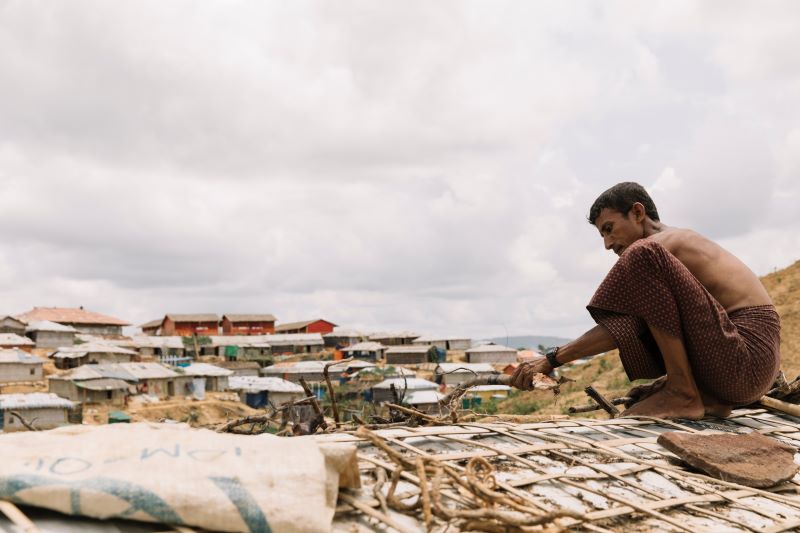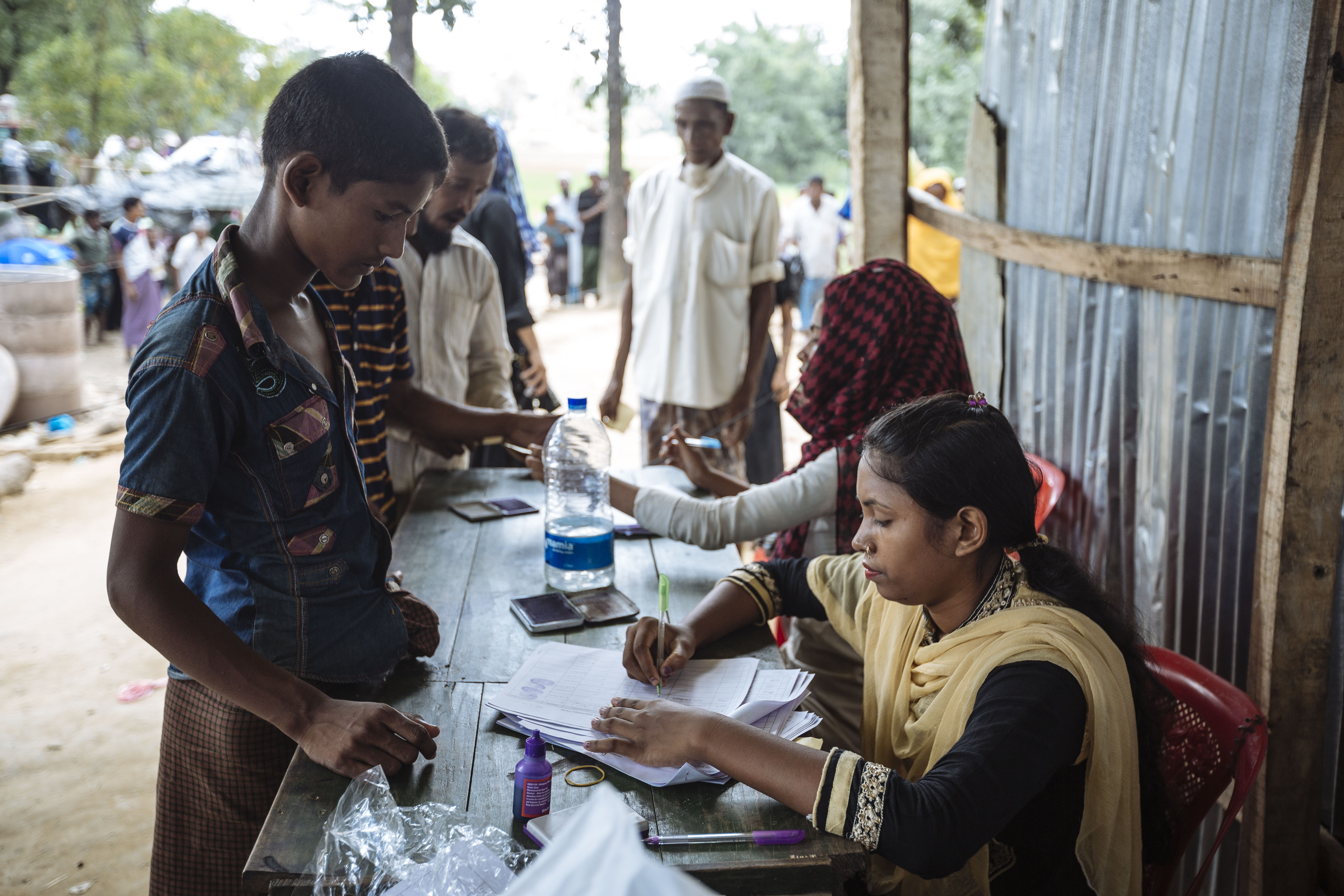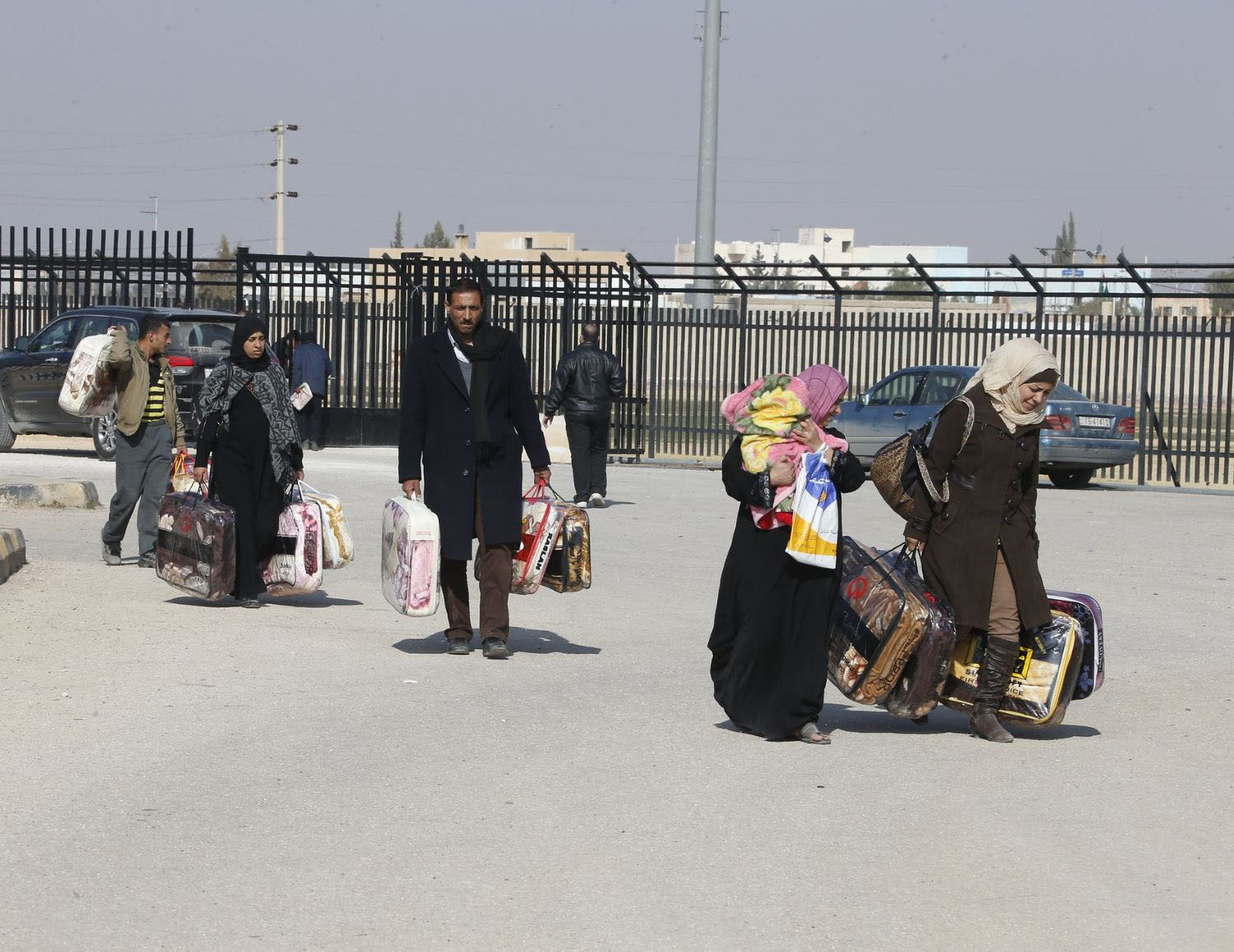Recommended

REPORTS
Bangladesh is currently providing an enormous global public good by hosting more than one million Rohingya refugees,[1] over 740,000 of whom crossed the border from Myanmar between August 2017 and mid-2018. Fleeing violence and ethnic cleansing in Myanmar, the vast majority of Rohingya are now confined within camps in Cox’s Bazar, already one of the poorest districts in Bangladesh.
The first and best solution—and top priority—should be the safe, voluntary, and sustainable return of Rohingya to Myanmar. However, given the lack of political will and progress in Myanmar toward meetings these conditions, there is a real risk that this refugee crisis will become protracted. Credible estimates suggest that in a realistic scenario for repatriation, significant numbers of Rohingya will remain in Bangladesh for more than 10 years.[2] While Bangladesh and Myanmar have recently attempted small-scale repatriation, these efforts have failed as refugees refused to go back, fearing for their safety. Conditions in Myanmar’s Rakhine State continue to deteriorate, and UN agencies have been denied full access to areas of return. Despite this, planning so far has been short-term and focused on aid rather than medium-term economic, environmental, and human development approaches.
This lack of medium-term planning leads to problems for refugees, for the host community in Cox’s Bazar, and for Bangladesh as a whole. The needs of over a million refugees extend well beyond single-year planning cycles. Even before the refugee influx, the host community in Cox’s Bazar faced one of the highest rates of poverty in the country; it was also among the areas most vulnerable to climate change and most lacking in economic development. The Government of Bangladesh has taken important steps to develop the district by investing in a deep sea port; transport infrastructure (including new rail, airport, and road linkages); and power-generation capacity, but many of these projects are still in relatively early phases and will require sustained efforts for years to come. For Bangladesh as a whole, the refugee crisis threatens to divert attention from its progress toward the Sustainable Development Goals (SDGs), including the commitment to “leave no one behind.”[3]
The time to act is now. There is a finite window of opportunity to embed medium-term approaches before international attention wanes further and donor fatigue results in even greater funding shortfalls. By a medium-term response, we mean a package of initiatives beyond short-term humanitarian assistance that seek to more sustainably address the needs of the Rohingya refugees and the local Bangladeshi host community, as well as to support Bangladesh in achieving its national goals of economic growth and poverty alleviation, including acceleration of its ongoing infrastructure and economic development efforts in Cox’s Bazar. A critical component of a medium-term response is “responsibility-sharing”: the notion that global actors, including the international community and private sector, should assist Bangladesh in ensuring the welfare of refugees from a crisis that it did not cause or create.
To be clear, the medium-term approaches proposed here are not meant to address the entirety of the Rohingya refugee crisis, since the ultimate solution—safe, voluntary, and dignified repatriation—is contingent upon actions to secure justice and accountability for Myanmar’s atrocities, alongside policy reforms to guarantee Rohingyas’ citizenship, freedom of movement, and livelihoods in Rakhine. Our medium-term approach is based on the reality that progress with Myanmar will take time.
During this period of protracted displacement, a medium-term response can be triple win—it can bring concrete benefits to Bangladesh as a nation, to the host community in Cox’s Bazar, and to the Rohingya:
- For Bangladesh, international support can bring much-needed investment and economic opportunities that it otherwise would not receive. This type of support would help ensure continued progress towards Bangladesh’s important national goals of sustaining gross domestic product growth, increasing investment and foreign direct investment, alleviating poverty, and improving environmental sustainability.
- For the host community in Cox’s Bazar, refugee arrivals have created new economic opportunities for some host community members. But the area is suffering from increased deforestation, competition for low-wage jobs, rises in some commodity prices, and other impacts from suddenly receiving well over half a million new neighbors. The approaches proposed here would concentrate job creation and skills building in the local area, and promote forest landscape restoration.
- And although most of the ideas proposed here are focused on creating benefits for the local Bangladeshi host community and growing the overall welfare, there would be direct benefits to refugees in the form of new livelihoods and skills building opportunities.
Finally, medium-term approaches also mitigate the risks of the status quo, which include increases in social tension between refugees and the local host community; negative coping mechanisms among refugees, such as child labor, child marriage, and human and drug trafficking; and worsening impacts on the local environment and some parts of the local economy in Cox’s Bazar.
We propose a three-part approach involving increased private sector investment, employment-oriented skills development, and forest landscape restoration—all underpinned by complimentary policy changes and funding. Of course, there is important other work that needs to be done to support Rohingya and host communities in the medium-term, but our research suggests that the following can be feasibly pursued and can form the core of a package of medium-term approaches.
Components of the medium-term approach to address the Rohingya crisis
1. Private sector investment into the historically under-developed Cox’s Bazar area.
This aligns with the Government of Bangladesh’s overall goals to boost private sector investment in order to ensure continued rapid economic growth and poverty alleviation. We propose a focus on private sector growth and job creation in Cox’s Bazar by crowding in private sector investment into promising local value chains such as seafood, agri-processing, and clean energy.
Based on our preliminary assessment, we have identified five ideas that are likely to have sustainable business cases (although some incentives may be needed in the beginning phases), will generate local employment, and are likely to garner private sector interest. To spur private sector investment into these and other sectors in Cox’s Bazar, the Government of Bangladesh and donors should work together to create and fund mechanisms such as investor facilitation, concessional financing to encourage investment, technical assistance, and disaster risk insurance—as well as increase support and accountability for decent working conditions.
2. Employment-oriented skills development to upskill workers in Cox’s Bazar to match with higher-wage, formal job opportunities in expected growth sectors such as construction and the formal services sector, both in Bangladesh and abroad.
This could be done through focused short-term training programs to fill specific employer job needs such as for welders, construction machinery operators, and hotel clerks.
Another idea is the Global Skill Partnership model—an international labor migration program that could be employed to train Bangladeshi citizens in the host community, some of whom would stay in Cox’s Bazar while others go abroad to work. This model would improve the skills and job opportunities available to the host community while also growing remittances that could be used to alleviate poverty and contribute to local development. Over time, and as livelihoods opportunities grow, refugees could receive training for local jobs.
3. Forest landscape restoration to turn back the worrying trends of deforestation and environmental degradation accelerated by the influx of refugees.
Programming in this area should focus on improving the efficiency and impact of reforestation investments; improving seedling survival and benefits inside and outside camps; improving disaster resilience and nutrition inside camps; and increasing ecological and social benefits outside camps. We also recommend that financial investment in restoration be increased substantially in order to optimize potential benefits, including by exploring livelihoods programs to support hosts and refugees to maintain and make sustainable use of environmental resources.
The above initiatives will not be possible or achieve full impact unless they are accompanied by complementary policy changes and funding. These policy changes should include those that facilitate growth and development and that support greater refugee self-reliance. The Government of Bangladesh should work with local authorities and the international community to define a medium-term plan for Cox’s Bazar that works towards collective and common development outcomes, including relevant business and regulatory reforms, in line with national goals and the SDGs. The international community should support this plan through multiyear funding commitments. The Government of Bangladesh should also expand refugee rights in the longer term by granting refugees the right to work, freedom of movement, and access to accredited formal education. International partners should form a medium-term planning group to coordinate assistance—both technical and financial—to the Government of Bangladesh on medium-term plan development and implementation.
[1] While Bangladesh is not a signatory to the 1951 Refugee Convention, nor does it recognize these new arrivals as refugees, Rohingya who have fled across borders unequivocally meet the refugee definition and are recognized as refugees by the United Nations High Commissioner on Refugees and the international community. They are provided assistance and protection as such by the UN system, NGOs, and INGOs in cooperation with the Government of Bangladesh. The Bangladeshi government classifies Rohingya who have fled to Bangladesh from Myanmar since August 2017 as Forcibly Displaced Myanmar Nationals.
[2] UNDP Bangladesh Country Office, “Impacts of the Rohingya Refugee Influx on Host Communities,” November 2018, https://issuu.com/bdundp/docs/impacts_of_the_rohingya_refigee_inf.
[3] As the Government of Bangladesh’s Planning Commission wrote in its 2018 SDG Progress Report, “The sudden influx of almost a million Rohingya refugees in Teknaf area has put enormous pressure on drinking water and sanitation facilities” (p. 78), and “recent influx of Rohingya refugees from Myanmar is putting tremendous pressure on remaining forests in Teknaf-Cox’s Bazar range” (p. 150). “Sustainable Development Goals: Bangladesh Progress Report 2018,” Government of the People’s Republic of Bangladesh Ministry of Planning, Bangladesh Planning Commission General Economics Division, December 2018, https://www.undp.org/content/dam/bangladesh/docs/Publications/Pub-2019/SDGs-Bangladesh_Progress_Report%202018%20(1).pdf.
Rights & Permissions
You may use and disseminate CGD’s publications under these conditions.







